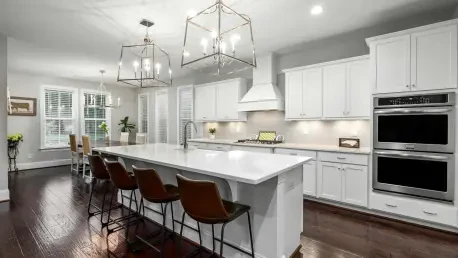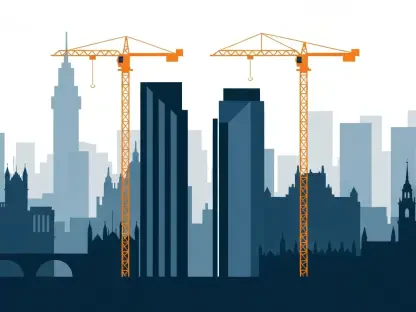In the world of interior design, certain pieces of furniture have begun to capture the attention of both professionals and homeowners due to their unique blend of aesthetics and practicality. Stools, once considered only an afterthought in home furnishings, have emerged as a popular choice in modern design trends. Their rise can be attributed to their ability to offer both stylish appeal and functional use, making them an indispensable element in contemporary decor. With advances in materials and design, stools are no longer just an ancillary need but a crucial component that can redefine a space. These versatile pieces can transform rooms with their vibrant colors, diverse shapes, and innovative textures, providing practicality without compromising on style.
The Aesthetic Appeal of Stools in Modern Design
Diverse Shapes and Colors for Every Taste
Stools have transformed into a staple piece not just for their functionality but for their ability to enhance the visual interest of a room. Their diverse shapes and rich color palettes make them attractive to a wide spectrum of tastes and styles. For those looking to introduce architectural intrigue into their homes, stools present an appealing solution. By selecting the right color or shape, one can easily draw attention to specific areas of a room or highlight thematic design elements. Whether opting for a minimalist design with sleek metal lines or a rustic look with wooden textures, stools provide an unexpected pop without overshadowing other decor.
The aesthetic flexibility of stools allows them to be seamlessly integrated into various design themes. Designers often favor stools for their capacity to adapt, effortlessly fitting into urban lofts, countryside cottages, or chic apartments. By utilizing vibrant colors or striking patterns, stools can inject a playful or eclectic touch into a room, adding character and depth. Whether serving as an eye-catching centerpiece or a subtle complement to existing décor, these versatile pieces offer a wide array of design possibilities. Their ability to blend well with both modern and traditional settings makes them a favored choice among designers, reflecting their growing significance in interior aesthetics.
Versatile Placement and Decorative Role
Beyond their striking appearance, stools offer a remarkable degree of placement versatility within a home. Lightweight and easy to move, they can be shifted from room to room with ease to accommodate changing needs or occasions. In spaces where maximizing usage is essential, stools prove to be particularly valuable. For instance, they can serve as additional seating in entertainment areas or cozy nooks in smaller apartments. This capacity to quickly adapt to different settings enhances their utility and appeal, allowing them to fulfill varying functional and decorative roles.
The decorative potential of stools is further exemplified by their ability to serve as more than just seating options. They can function as small side tables, providing surfaces for displaying books, plants, or art pieces. The simplicity of their design offers an unobtrusive yet effective way to showcase a unique vase or highlight a cherished photograph. Moreover, their mobility ensures that they can be positioned strategically for different events or moods, providing a dynamic addition to a home’s decor. These multiple uses underscore the stool’s importance in modern design, showcasing how this simple piece can have a substantial impact on a space’s overall look and feel.
The Practical Functionality of Stools
Enhancing Comfort and Ergonomics
While stools enhance the visual appeal of interior spaces, their practical functionality cannot be overstated. They offer excellent solutions for extra seating, particularly in homes where space is limited, without the bulk of traditional furniture. One of the key advantages of stools is their ability to support ergonomic seating arrangements. Koshel, an expert on interior aesthetics, notes that footstools, for example, contribute significantly to comfort by providing a place to rest feet, which encourages a healthier posture. Their design, often lower than typical chairs or ottomans, allows for a more natural leg position, reducing strain and promoting better circulation.
The ergonomic benefits of stools extend beyond mere comfort. By facilitating healthier seating positions, they promote overall well-being and can alleviate discomfort associated with prolonged periods of sitting. In environments where physical comfort is prioritized, such as office spaces or study areas, incorporating stools can enhance the ergonomics of a room while also maintaining its visual appeal. Their versatility in design and function reflects a broader trend towards furniture that prioritizes user health alongside aesthetic considerations, highlighting their essential role in present-day interiors.
Adaptability to Various Home Environments
In addition to their ergonomic benefits, stools demonstrate remarkable adaptability in various home environments. Their compact design makes them especially suitable for smaller living spaces where maximizing square footage is essential. This adaptability is further enhanced by their lightweight nature, which allows them to be moved easily to different areas as needed. Whether used in a living room, kitchen, or outdoor patio, stools can fulfill diverse roles such as seating, footrests, or impromptu tables for gatherings. Their multifunctionality caters to the dynamic nature of modern living, ensuring they can meet changing demands in a single piece of furniture.
Stools also bring significant practical advantages in terms of storage and dual functionality. Some designs include storage spaces, catering to those in need of clever solutions for organizing household items. For example, hollow stools can conveniently store blankets or books, seamlessly combining storage with seating. Larger stools can double as coffee tables, providing additional utility without consuming extra space. This innovative approach to design ensures that stools can accommodate various needs while maintaining their stylish appearance, solidifying their place as a trendy and functional element in modern interior design.
Looking Towards the Future of Stools in Design
In interior design, certain furniture pieces have captured the interest of both professionals and homeowners due to their unique blend of beauty and practicality. Traditionally overlooked, stools have emerged as a popular choice in modern design trends, gaining attention for their ability to offer both stylish appeal and functional use. Once considered merely additional seating, stools now play a pivotal role due to advancements in materials and designs. They are no longer just ancillary but are a crucial component that can redefine a space. Today’s stools offer vibrant colors, diverse shapes, and innovative textures, transforming rooms with their versatility without sacrificing style. Whether used in kitchens as counter seating, in living rooms as extra seating, or even in bathrooms for added convenience, stools have proven indispensable. Their adaptability, coupled with aesthetic options, makes them a staple in contemporary decor, demonstrating that practicality can indeed coexist with chic design elements.









